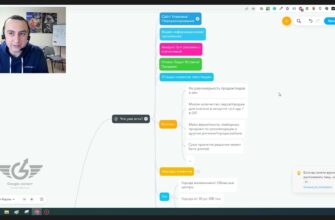- 1. Auto transform information.
- 2. Copy in original format.
- 3. Transfer content from table to map.
- 4. Transform columns to and from inline format.
- 5. Instant jump to a specific sheet.
- 6. Create a dropdown list in a cell.
- 7. Sparklines.
- 8. Quickly insert data into an already populated chart.
- 9. Creating a more complex table structure.
- 10. Restoring unsaved data.
Many people do not fully realize the potential of Excel or do not use it at all, considering it too complicated or inconvenient. Their opinion would change dramatically if they learned about the various chips that make it possible to speed up and simplify the workflow in this program. With their help, marketers or representatives of other professions that involve using Excel will be able to create, fill out and correct tables twice as fast and visually appealing. Below, we list 10 key features that will allow you to achieve maximum productivity and save time when working with Excel, using all the hidden features of the program.
1. Auto transform information.
This feature is available only in the latest version of Excel (2013), but some people, having learned about it, immediately update the program. Automatic information conversion is incredibly useful. It allows you to save a lot of time during work. For an example of its use, consider the case when it is necessary to convert the full name (Sergeev Sergey Sergeevich) into abbreviated ones (Sergeev S.S.). To do this, you need to alternately enter the initial text in the column. On the second or third name, the program will try to help you and offer to perform subsequent conversions automatically. To confirm the action, it will be enough just to press the “Enter” key.
2. Copy in original format.
You can perform this operation using the black cross in the lower right corner of the cell. An important addition is the choice of the “Copy only values” option. If this is not done, then the visual format of the table will be broken during subsequent insertion.
How many calls and sales will I get by ordering contextual advertising from you?
I need to calculate the conversion of my website Describe
the task
in the application
Calculate potential ad revenue Google
contextual advertising calculator
3. Transfer content from table to map.
In Excel 2013, there is a function that allows you to instantly transfer geo-information (branches by city, etc.) to an interactive map. This operation only at first glance looks complicated. In fact, to complete it, all you need to do is go to the Office Store (online add-on store) on the “Insert” tab and install the Bitmaps application.
4. Transform columns to and from inline format.
First, select the necessary data, then copy it with the key combination Ctrl + C. Next, point the mouse cursor at the desired cell, press the right mouse button and select the transport method of insertion. If you are using an old version of Excel, then you can do this using the key combination Ctrl + Alt + V and using the data transfer method mentioned above.
How many calls and sales will I get by ordering contextual advertising from you?
I need to calculate the conversion of my website Describe
the task
in the application
Calculate potential ad revenue Google
contextual advertising calculator
5. Instant jump to a specific sheet.
Right-click on the panel at the very bottom of the program, go to the view of all sheets. Then you can select a specific one from the general list.
6. Create a dropdown list in a cell.
To do this, select the desired cell, then go to the “Data” section and select “Data Validation”. Among the proposed categories, we are interested in the “list”. The final touch is the indication of the elements themselves, which will subsequently be displayed when clicked.
7. Sparklines.
They are hand-drawn charts with useful data that can be created right in the cells of an Excel spreadsheet. To implement them, you must select “Histogram” or “Graph” in the “Sparklines” section on the “Insert” tab. In the window that appears, you will need to enter the necessary data, and the program will automatically display the dynamics of changes. Additionally, you can change the color, chart format, and other options.
8. Quickly insert data into an already populated chart.
To add them, you need to select the necessary information and copy it with the key combination Ctrl + C. Then just hover over the chart itself and paste it with Ctrl+V.
9. Creating a more complex table structure.
You can use additional table features in Excel by selecting the required range of information and then clicking on the “Format as Table” item in the “Home” section. The usual list will immediately become more modified. With this function, you can automatically distribute data across all new rows or columns, leave them stationary while scrolling, connect sorting filters, and so on.
10. Restoring unsaved data.
We saved the most interesting and effective function in Excel for dessert. It is considered incredibly useful, as there are often situations when you accidentally close a file with which you spent a lot of time, and you have to fill in all the information again. You didn’t have to do this if you knew about the function that restores unsaved data. If you are using Excel 2010, then you need to go to the “File” section and click on “Recent”. Next, we click on “Recover Unsaved Books” (located in the lower right corner). In Excel 2013, go to the “File” section, then to “Details” and select “Version Control”. After that, you need to click “Restore Unsaved Books” and a specially provided archive with data will open.


















